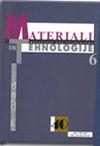不同施加压力对aa2024 - 16旋转摩擦焊接接头的影响
IF 0.8
4区 材料科学
Q4 MATERIALS SCIENCE, MULTIDISCIPLINARY
引用次数: 0
摘要
在恒摩擦压力下,采用不同锻造压力的旋转摩擦焊技术焊接AA2024-T6铝合金。结果表明,增大锻造压力对焊接接头的抗拉强度有不利影响。当锻造压力为80 MPa时,最大抗拉强度为366.22 MPa。然而,随着锻造压力的增加,失效能和延伸率逐渐降低。当锻造压力为120 MPa时,拉伸伸长率最小为15.45%,破坏能最小为4.35 J。这种情况是由于在热影响区引起的高锻造压力和高温下塑性损失达到一定程度。在显微组织检查中,S相的存在是决定局部硬度的主要因素。S相在热影响区、热机械影响区和动态再结晶区受焊接热的影响。硬度增加到TMAZ的中间。在此区域,热输入引起时效效应,增加了晶间区域的分散S相。在再结晶区开始之前,主要由热输入控制的时效使硬度增加。本文章由计算机程序翻译,如有差异,请以英文原文为准。
EFFECT OF DIFFERENT APPLICATION PRESSURES ON ROTARY-FRICTION-WELDED AA2024-T6 JOINTS
An AA2024-T6 aluminium alloy was welded with a rotary-friction-welding technique using different forging pressures under constant friction pressure. It was found out that the increasing forging pressure has an adverse effect on the tensile strength of the welded joint. The maximum tensile strength was 366.22 MPa for a forging pressure of 80 MPa. However, the failure energies and elongations were decreased as the forging pressure increased. The minimum elongation was 15.45 %, while the minimum failure energy was 4.35 J with a forging pressure of 120 MPa. This situation is attributed to the loss of ductility up to a degree in high forging pressures and temperatures induced in the HAZ. In microstructural examinations the existence of the S phase has dominant role in determining the local hardness. The S phase is affected by the welding heat in the heat-affected zone, the thermomechanically affected zone and the dynamically recrystallized zone. The hardness is increased up to the middle of the TMAZ. In this zone the heat input caused an aging effect and increased the dispersed S phase in the intergranular zones. The aging mainly governed by the heat input increased the hardness up to beginning of the recrystallization zone.
求助全文
通过发布文献求助,成功后即可免费获取论文全文。
去求助
来源期刊

Materiali in tehnologije
工程技术-材料科学:综合
CiteScore
1.30
自引率
0.00%
发文量
73
审稿时长
4-8 weeks
期刊介绍:
The journal MATERIALI IN TEHNOLOGIJE/MATERIALS AND TECHNOLOGY is a scientific journal, devoted to original papers and review scientific papers concerned with the areas of fundamental and applied science and technology. Topics of particular interest include metallic materials, inorganic materials, polymers, vacuum technique and lately nanomaterials.
 求助内容:
求助内容: 应助结果提醒方式:
应助结果提醒方式:


